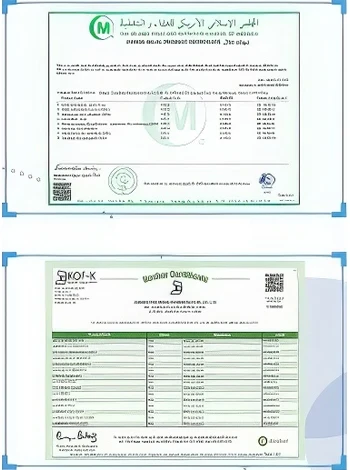



Exploring the Applications and Benefits of Ceramic Crucibles in High-Temperature Processes
The Versatile World of Ceramic Crucibles
Ceramic crucibles play a crucial role in various industrial and laboratory applications, serving as vessels that can withstand extremely high temperatures and harsh chemical environments. Made from high-purity materials, these crucibles are essential for processes involving fusion, melting, and sample preparation across a wide range of industries, including metallurgy, chemistry, and materials science.
One of the primary advantages of ceramic crucibles is their excellent thermal stability. They are designed to withstand the thermal shocks associated with significant temperature changes without cracking or breaking. This robustness makes them ideal for use in high-temperature applications such as metal casting, glass manufacturing, and analytical chemistry, where substances are often subjected to temperatures that exceed 1000 degrees Celsius.
Ceramic crucibles are typically made from materials like alumina, zirconia, or silica, which contribute to their durability and high resistance to chemical corrosion. For instance, alumina crucibles, known for their high melting point and resistance to chemical interactions, are frequently used in laboratories for everything from igniting samples to heat treatment processes. Similarly, zirconia crucibles offer exceptional thermal resistance and are recommended for applications requiring extreme heat without compromising structural integrity.
In metallurgy, ceramic crucibles are vital for the melting and casting of metals and alloys. Their ability to maintain high temperatures means they can efficiently melt metals without contamination. This quality is particularly important for industries focused on producing high-purity metallic elements or complex alloys where even minor impurities can significantly affect the final product's properties.
ceramic crucibles

In addition to their applications in metallurgy, ceramic crucibles are also frequently utilized in the realm of analytical chemistry
. They are indispensable for conducting tests that require very high temperatures, such as ashing, where organic materials are burned away to analyze inorganic residues. The ability of ceramic crucibles to withstand such processes without altering the composition of the material being tested makes them a reliable choice for chemists.The design and construction of ceramic crucibles can vary based on specific applications. For instance, some crucibles are shaped with wider openings to facilitate easier pouring of molten materials, while others may have lids to reduce contamination or improve heat retention during heating processes. Furthermore, the surface finish of ceramic crucibles can significantly influence their performance; smoother surfaces typically help reduce the risk of sticking when pouring out contents or cleaning them afterward.
Despite their strengths, ceramic crucibles do have limitations. They can be brittle, so proper handling is essential to prevent breakage. Moreover, while they can resist many chemicals, certain strong acids and alkalis may cause degradation over time. Consequently, users need to select the right type of crucible based on the specific materials and processes involved in their applications.
The future of ceramic crucibles lies in ongoing innovations in materials science, which promise to enhance their properties. Researchers are exploring composites and advanced ceramics that could yield crucibles with improved thermal and mechanical strength. These advancements may open new avenues in fields like nanotechnology, battery production, and beyond, where precise thermal control and material integrity are paramount.
In conclusion, ceramic crucibles are indispensable tools in various industries and laboratory settings. Their ability to withstand extreme temperatures and resist chemical corrosion makes them an ideal choice for processes that require high purity and durability. As advancements in materials technology continue to evolve, the capabilities of ceramic crucibles will undoubtedly expand, cementing their position as a mainstay in scientific and industrial applications. Whether for melting metals, conducting chemical analyses, or any other high-temperature application, ceramic crucibles remain a vital component, embodying the blend of durability, efficiency, and precision required in modern science and engineering.
-
Why Sodium Persulfate Is Everywhere NowNewsJul.07,2025
-
Why Polyacrylamide Is in High DemandNewsJul.07,2025
-
Understanding Paint Chemicals and Their ApplicationsNewsJul.07,2025
-
Smart Use Of Mining ChemicalsNewsJul.07,2025
-
Practical Uses of Potassium MonopersulfateNewsJul.07,2025
-
Agrochemicals In Real FarmingNewsJul.07,2025
-
Sodium Chlorite Hot UsesNewsJul.01,2025










